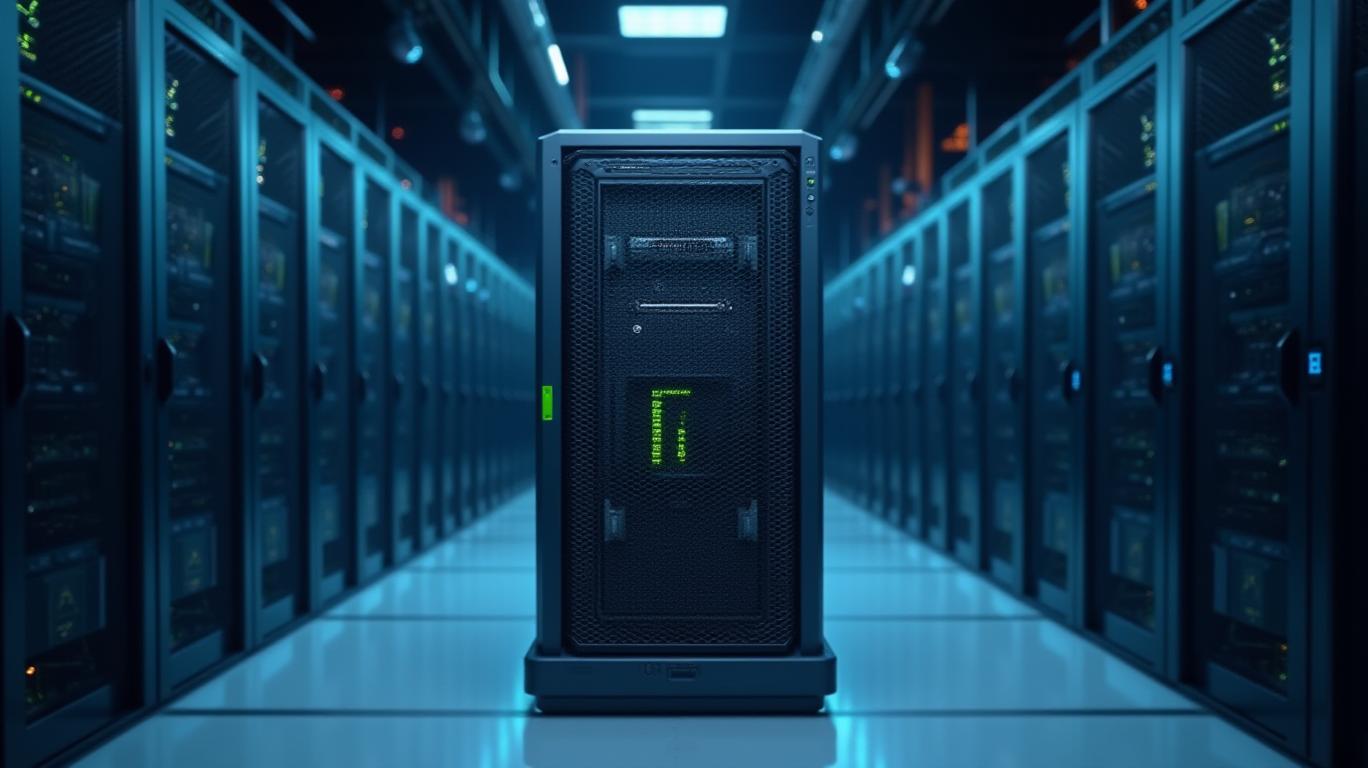Nvidia's AI Supremacy: Riding Structural Demand Amid Trade Headwinds
In a world where U.S.-China trade tensions loom large,
(NVDA) has emerged as a paradox: a company thriving in chaos. Its Q1 2025 results revealed a 69% revenue surge to $44.1 billion, driven by relentless demand for AI infrastructure, even as export restrictions to China shaved $8 billion from its Q2 outlook. Yet beneath the headline volatility lies a structural truth—Nvidia's dominance in AI chips is unshakable. Here's why investors should view today's dip as a buying opportunity.The Structural Demand Engine: AI's Appetite Can't Be Contained
Nvidia's Q1 results underscore a simple fact: AI isn't a fad—it's a seismic shift in computing. Data center revenue jumped 73% to $39.1 billion, fueled by hyperscalers like Microsoft, Amazon, and Meta racing to build AI supercomputers. The company's Blackwell GPUs and GB200 racks are the engines of this revolution, and their demand shows no signs of slowing.
Even as U.S. export controls disrupted sales to China, global AI adoption is now too widespread to be stifled by trade barriers. Governments from Saudi Arabia to Japan are pouring trillions into AI infrastructure, and Nvidia's technology is the gold standard. The firm's $11 billion deal to supply Saudi Arabia's AI factories—a tariff-free zone for its Grace Blackwell chips—proves that geopolitical alliances can offset trade headwinds.
Export Restrictions: A Speedbump, Not a Roadblock
The U.S. restrictions on H20 chip sales to China have indeed been costly: a $4.5 billion inventory write-down and $8 billion in lost Q2 revenue. Yet these numbers are manageable in the context of Nvidia's $44 billion quarter. More importantly, the company has already pivoted to compliant alternatives.
Newer Blackwell-architecture chips, such as the RTX Pro 6000D, now target the Chinese market at a lower price point ($6,500–$8,000) while avoiding export bans. These chips use conventional GDDR7 memory instead of restricted advanced packaging, ensuring accessibility. Mass production begins this quarter, and by September, a second variant will launch—a testament to Nvidia's agility.

CEO Jensen Huang's frustration with export policies is well-founded, but his solution—adapting to regulations while maintaining performance—has kept the company competitive. Even with China's market share dropping to 50% from 95%, total AI chip revenue grew 30% in 2024. The message is clear: trade tensions can't dent a company with a monopoly on the world's best AI hardware.
Diversification: A Global Playbook for Long-Term Dominance
Nvidia isn't just surviving—it's expanding. Its strategy is three-pronged:
- Geopolitical Partnerships: Beyond Saudi Arabia, the firm is building AI factories in Taiwan (with Foxconn) and Japan, while Stargate UAE in Abu Dhabi positions it as the backbone of Middle Eastern AI. These hubs insulate revenue from U.S.-China friction.
- Enterprise Lock-In: 70% of Fortune 500 companies now rely on Nvidia's AI platforms, and custom chip spending is growing at a 25% CAGR. The DGX Spark and RTX Pro servers are selling out, proving enterprises are willing to pay premium prices for cutting-edge AI.
- Ecosystem Supremacy: Tools like Omniverse and CUDA keep developers locked into the NVIDIA ecosystem. With over 40 million developers using its software, switching costs are astronomical—a moat no competitor can breach.
The $500 Billion Opportunity: Why Now is the Time to Buy
Analysts project the AI chip market to triple to $300 billion by 2030—but that's a conservative estimate. With trillion-parameter models demanding exponential compute power, Nvidia's lead in GPU architecture and AI software gives it a >60% share of the high-end market. Its $40 billion TSMC partnership ensures cost advantages, while the CHIPS Act funds guarantee U.S. manufacturing scale.
The near-term volatility? A buying opportunity. At a P/E of 35—lower than its five-year average—the stock is pricing in export restrictions but not the decade-long AI boom. Even with Q2 headwinds, consensus forecasts still see 53% revenue growth this quarter, and gross margins are on track to hit mid-70% by year-end.
Conclusion: The AI Era's Operating System
Nvidia isn't just a chipmaker; it's the operating system of the AI era. Trade tensions are a sideshow in a story where the real plotline is global AI adoption. With $5.5 trillion in projected enterprise AI spending by 2030, the company's moat is unassailable.
The takeaway? Ignore the noise. Buy Nvidia now—its short-term pain is long-term gain. Historically, this strategy delivered an average return of 581.62% over the holding period, though with significant volatility, as highlighted by a maximum drawdown of -55.05%. The strong risk-adjusted returns (Sharpe ratio of 1.07) underscore the potential rewards for investors who can withstand short-term turbulence.

Comments
No comments yet